We often see many different Chinese robe styles of Hanfu, but you may not be able to say exactly what the difference is between them.
There are many similarities in different styles of Hanfu, but with the development of history, it is gradually optimized, convenient to wear, and also derived from different shapes.
This article will introduce the form system of the Hanfu and Chinese robe system.
The form system of Hanfu
There are many styles of Hanfu, but they can be divided into the following shapes,
- Yichang system (衣裳制), is the kind with the separation of the upper and the lower garments.
- Shenyi system (深衣制), is the one-piece kind that unites the upper and the lower garments together, make separately, and sew together.
- Paofu system (Chinese robe, 袍服制), cut out the upper and the lower garments with a piece of cloth, no seam in the middle, natural integration.
The uniform system of Chinese robe (袍服)
Chinese robes appeared in the pre-Qin period, at that time, were just underwear with cotton, so people have to wear it with their coats.
In the Zhou Dynasty, emperors used robes for daily wear. In the Qin and Han Dynasties, the status of robe rose, and they were regarded as dresses.
In ancient China, most of the full-dress was large sleeves, including Chinese robes, which were basically large sleeves.
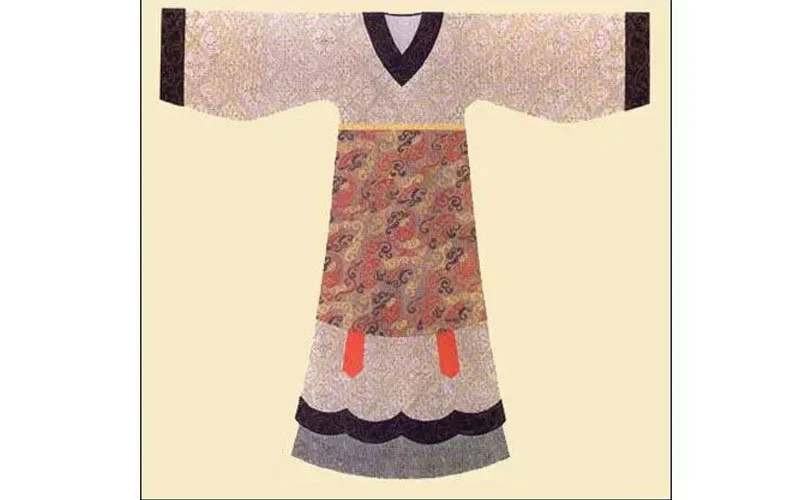
The Paofu of officials in the Han Dynasty
In the Han Dynasty, both men and women could wear Chinese robe, especially women, except for underwear, they could also wear them outside at ordinary times. As time goes on, the robe becomes a kind of coat, which is usually decorated on the collar, sleeves, lapels, and other parts.
Some ingenious women often put heavy colors on their robes and embroidered them with various patterns. Even at the grand wedding moment, also wear this kind of clothing.
After the Eastern Han Dynasty, robes and clothes were gradually used as coats, which was in the period of elimination of Quju (曲裾; a kind of dress with Shenyi system).
After the Chinese robe replaced the Quju, it became more widely used and was used as court clothes. It can be worn from the emperor to the officials.
The lace color and pattern color are relatively plain. The common patterns are rhombus patterns and checkerboard patterns. When wearing, the inner garment will be exposed.
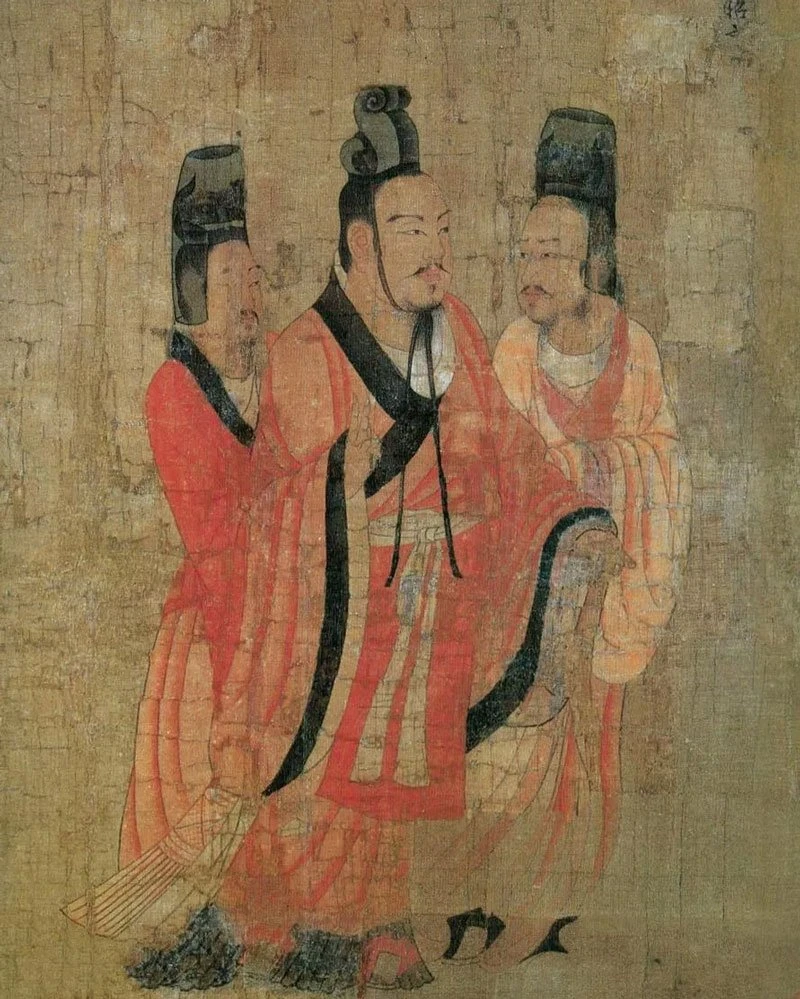
Emperor Zhao of the Han Dynasty (汉昭帝), the eighth emperor of the Western Han Dynasty
We picked out the classic styles of Chinese robe, introduced them in detail, and analyzed the differences between similar styles.
Round Collar Robe (圆领袍; Yuanlingpao)
"Round collar robe" is a kind of robe with a round neckline, it is almost regarded as the name of the ancient official uniform.
All literary works involving Tang, Song and Ming Dynasties, whether opera or film and television drama, are basically dressed in a round-necked robe.
History and development:
The earliest round collar robe found in China was Loulan, Xinjiang, in the early Eastern Jin Dynasty.
But around 500 BC, in the cultural status of Western Asia under the control of ancient Persia, it was found that there was a dress image of this kind of robe, so the hometown of the round collar robe may be western Asia.
Before the Eastern Han Dynasty, the round collar Chinese robe was used as underwear, after the Six Dynasties (222-589 A.D.), it began to be worn as a formal dress, popular in the Sui and Tang Dynasties.
After the development of the Sui and Tang Dynasties, it gradually spread across the country and became the mainstream of social dress. Both men and women can wear round collar robes until the end of the Ming Dynasty.
Characteristic:
- There are four types of collars for round collar robes: no collar, micro stand collar, wide collar, and stand collar.
- In terms of color, men's round collar robes are mostly pure color, with dark flower patterns or without patterns; women's round collar robes are brightly colored and have patterns.
- The robes were originally straight sleeves or arrow sleeves and were worn as regular clothes. In the Song and Ming Dynasties, the round collar robes developed into a full dress and official dress, and the sleeve gradually became a big sleeve.
- The round collar robes of the Korean Dynasty are very similar to those of the Ming Dynasty, the difference is that in the later period of the Korean Dynasty, the hem of the round collar robe was longer and longer, the "Bu (补)" was smaller and smaller, and the upper body was shorter and shorter, just like women's hanbok, there are more distinctive national characteristics.
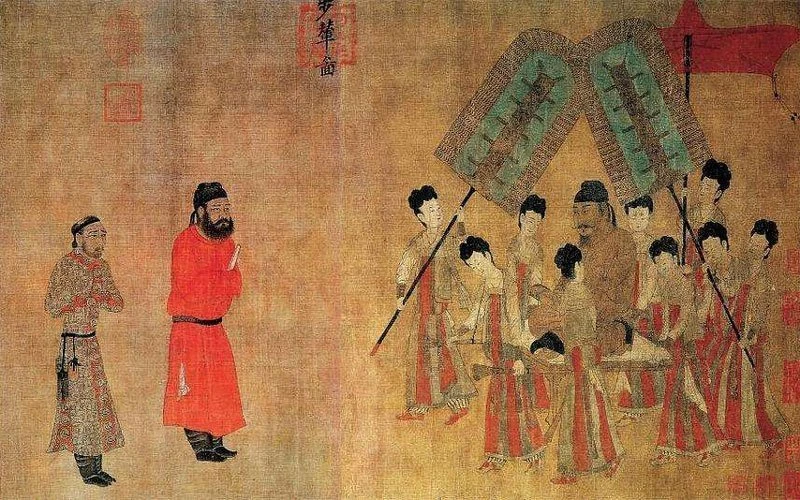
步辇图, a famous painting of Chinese robe in ancient China.
Lanshan (襕衫; lán shān)
History and development:
Lanshan appeared in the Tang Dynasty and was popular in the Song Dynasty and Ming Dynasty. On the basis of the round collar robe, it is a formal garment that people modify and stipulate.
There is a seam to the knee, which is called "Heng Lan (横襕)", this is the meaning of inheriting ancient deep clothes, cutting separately and sewing later. In ancient times, Lanshan was the official uniform, and many students wore it.
Lanshan is developed from a round collar robe, but there are some differences between them. You can see the following pattern of picture to better understand their differences, round collar robe has a Bai (摆; as shown 9 and 11 in the picture), and Lanshan has Heng Lan (the black part of the picture).
Characteristic:
There are two kinds of Lanshan: Ming's (明制襕衫)and the Song's (宋制襕衫)
- In the Song Dynasty, Lanshan developed on a large scale and entered more occasions. Men's clothes are mainly made of thin cloth, with white color and waist strap, comfortable and light to wear at home.
- In the Ming Dynasty, the use of round necked Lanshan was more extensive, most of them were made of blue cloth, and the hem of the clothes was wide. In Ming Dynasty Novels, there were many descriptions of the Lanshan, generally the costumes of scholars and others.
- The main difference between the Ming style and the song style is that the Ming style has a Bai (摆), while the song style has no Bai.
In modern times, Lanshan is generally used in occasions such as men's adult ceremony. At the same time, some Chinese degree dress designers think that Lanshan is more suitable for Chinese degree dress than other styles.
The following is the introduction of Daopao (道袍;dào páo), Zhiduo (直裰;zhí duō), Zhishen (直身;zhí shēn), they are very similar.
Before the introduction, first understand what is Bai (摆): The cloth strip added to prevent the underwear from being exposed at the clothes fork when walking.
Zhiduo (直裰; zhí duō)
History and development:
Zhiduo originated in the Tang Dynasty. It was a kind of Chinese traditional clothing that was generally worn since the Song Dynasty. It was a style that was often worn by scholars in the Song and Ming Dynasties. When the man is wearing the Zhiduo, he looks very elegant. The Zhiduo are cut as a whole, and the two sides are slotted for convenient action. In the Song Dynasty, most of Zhiduo were dressed by monks (a few literati also wore them). In the Ming Dynasty, the style of Zhiduo changed and became popular among literati and scholar-officials.
Characteristic:
- In the Ming Dynasty, there were specific regulations on the length of Zhiduo, which must be longer than the knee.
- In the Song Dynasty, there was no gap between the two sides of Zhiduo, however, in the Yuan and Ming Dynasties, the two sides of Zhiduo were split.
- There is a straight-through the middle seam at the front and back of the Zhiduo.
- The shapes of sleeves are straight sleeves in Song Dynasty, Pipa sleeves in Ming Dynasty, square sleeves, etc;
- Only men will wear Zhiduo in ancient time.
Daopao (道袍; dào páo)
Daopao is a kind of costume that originated from the Ming Dynasty. It can also be used as a lining gown or a common man's wedding dress.
The Daopao has a straight collar and big Jin (襟), with a slit on both sides and hidden Bai, secure with tie wraps. The neckline is often decorated with a white or plain color collar. It can be worn with a silk belt or cloth belt or a large belt.
Daopao were worn by the workers in the ancient bottom society, not for the exclusive use of scholars, for home-based clothes. The popular changes of Daopao are often reflected in the structure of hidden Bai, the length of the body and the width of the sleeve.
From the description of novels and notes in the Ming and Qing Dynasties, the general trend of Daopao is that the two sleeves are continuously widened, and the large and long sleeves are favored by people.
If the "round collar robe" is the symbol of the official uniform, the "Daopao" is the symbol of the scholar, we can see the elegant and handsome image of scholars from Ning Cai Chen (宁采臣) in "A Chinese Ghost Story (倩女幽魂)", Xu Xian (许仙) in "The Legend of White Snake (新白娘子传奇)" and Liang Shanbo (梁山伯) in the opera "The Butterfly Lovers (梁祝) ". In fact, the source of the image is the Ming Dynasty's "Daopao" type of clothing.
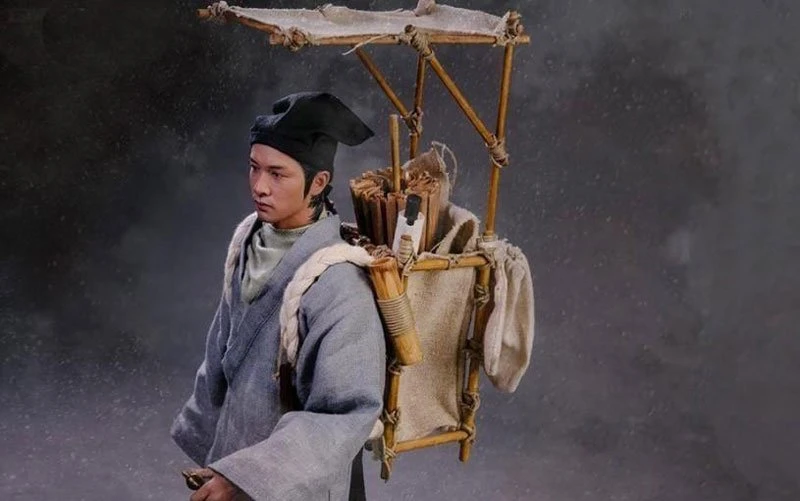
Ning Cai Chen in the film
After the Qing Dynasty, Han men's clothing almost encountered an irreversible fault, only a small number of clothing in the opera can be preserved.
The robes we see on the stage are called "Zhezi (褶子)", and the old name is "Daopao", "Zhezi", is still the most widely used robe on the stage of Peking Opera, continuing the trend of popular style in Ming Dynasty.
The influence of "Daopao" has spread to the Korean Peninsula. The most common dress of male nobility in Li's North Korea is "Daopao". Up to now, we can still see one or two of them from Korean dramas, and even retain more details of the style of "Daopao".
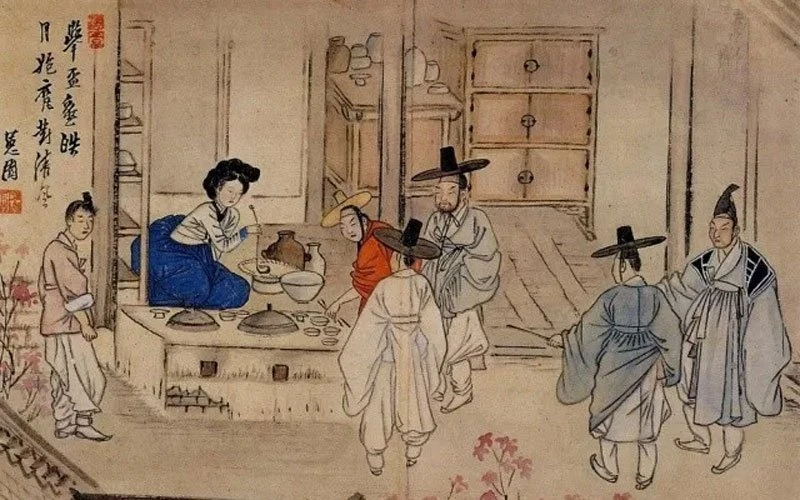
Daopao of North Korea
Zhishen (直身; zhí shēn)
Zhishen is also an important dress in the Ming Dynasty. Like Zhiduo and Daopao, Zhishen is an important dress worn by scholars of the Ming Dynasty.
Zhishen is very similar to the Daopao, straight collar, big Jin, Youren (右衽), secure with tie wraps, the structure of double Bai is a mark to distinguish the Daopao and Zhishen.
Zhishen does not have the edge of the bottom edge, and the sleeves of Zhishen are narrower, which is more convenient. Zhishen is more suitable for formal occasions than Daopao.
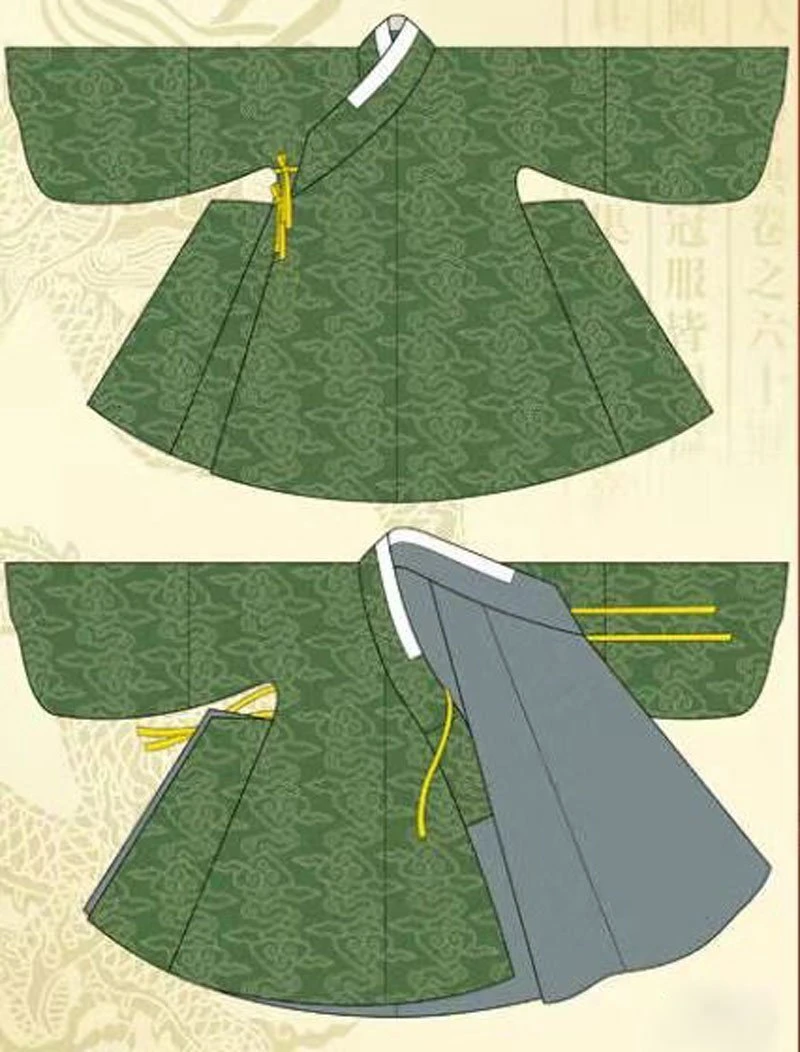
Pattern of Zhishen
The difference between Zhiduo, Zhishen, and Daopao
In general, they differ in Bai:
- Zhishen's Bai is the same as the round collar robe, on both sides of the outside, very prominent.
- The Daopao's is inside and sewed on the back. In a sense, it's a sealed slit.
- Zhiduo has no Bai, you can see the clothes or pants from the slit.
Yisan (曳撒; yì san)
Yisan, one of the costumes of the Yuan Dynasty. The original meaning of Mongolian robe. In the early Ming Dynasty, as the royal bodyguard clothing, the later use scope gradually expanded, and the style also changed.
In the middle period of the Ming Dynasty, military officers adopted the style of Yisan, gradually abandoning the traditional style of the Yuan Dynasty and creating a form with Ming characteristics.
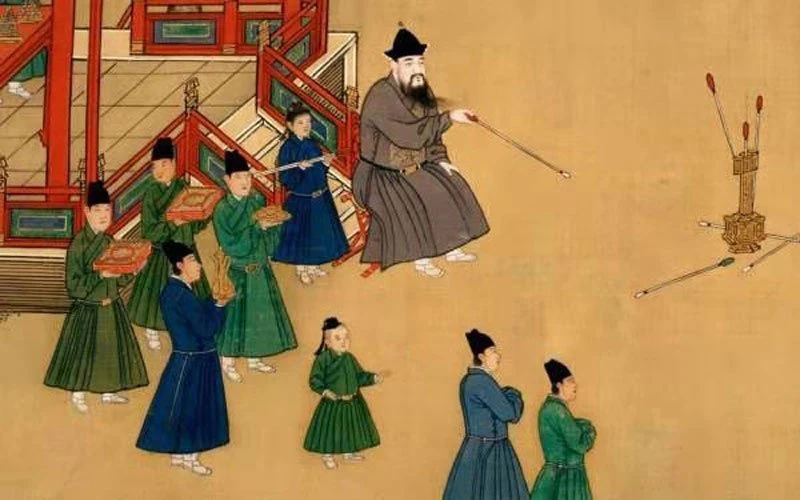
Chinese robe- Yisan in ancient paintings
There are a large number of Yisan with Han style patterns, such as Qilin (麒麟) and Feiyu (飞鱼), greatly increased the luxuriance and decoration of Yisan.
By the late Ming Dynasty, Yisan had gradually evolved into a regular dress for the literati and officials, which could also be worn by those attending the banquet. With the integration of traditional Chinese clothing, Yisan became a representative style of the Ming Dynasty.
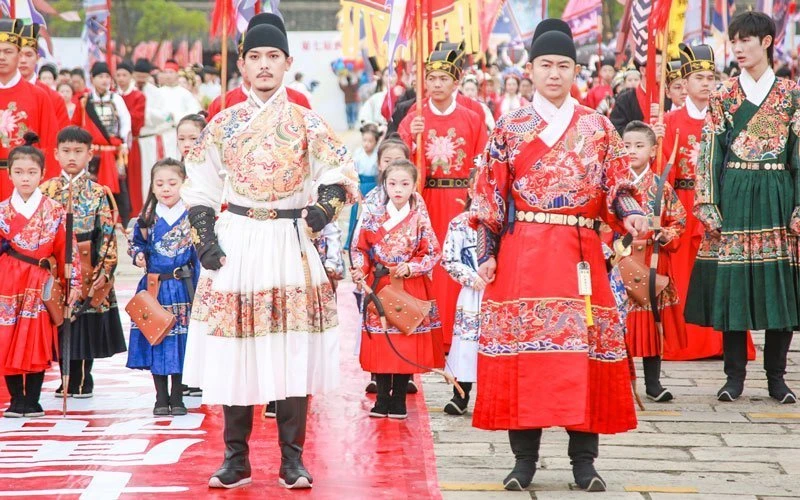
Chinese robe in modern costume activities
Hanfu with divine animal patterns
When we often mention Feiyufu (飞鱼服), mean a certain type of hanfu form? Actually, it is not quite correct.
The Feiyu is a kind of pattern, and a Hanfu with a Feiyu pattern can be called a Feiyufu. Similarly, there are Douniufu (斗牛服), Mangfu (蟒服) and so on.
These patterns often appear in the Ming Dynasty's Ci Fu (赐服), which is the emperor's reward for the court's meritorious officials.
- The form has: Yisan, Tieli, round neck robe, Daopao, etc.
- The pattern has Mang Wen, Feiyu Wen, Douniu Wen, Qilin Wen, etc.
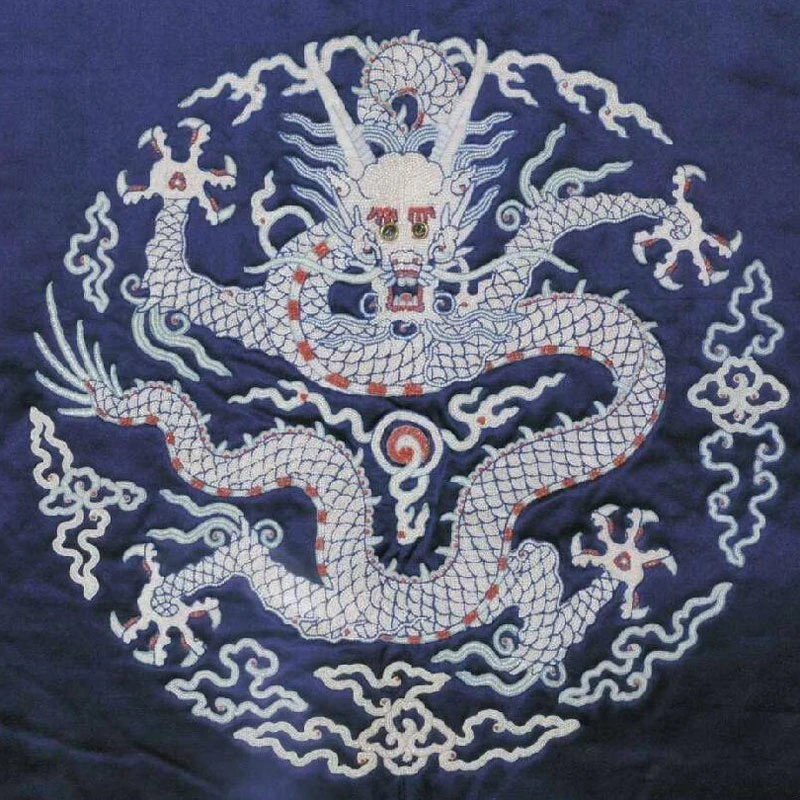
Dragon pattern
Mang Wen (蟒纹)
Ming Dynasty clothing fabric on the Mang Wen is actually the shape of the dragon, the only difference is that the dragon pattern for "five claws (five toes)", the Mang Wen is "four claws", decorated with Mang Wen of clothing commonly known as Mang Fu.
Feiyu Wen (飞鱼纹)
The Feiyu on the Ming clothing is a high level pattern second only to the Mang Wen, initially characterized by a dragon head, two feet (four claws), two wings, a pair of ventral fins and no hind limbs, and a "fishtail" tail that rolls to both sides.
After the proliferation of various high-level patterns, the Feiyu pattern gradually approached to the Mang pattern with four feet (the ventral fins disappeared), and the wings were either present or absent. Only the "fishtail" remains at the end of the tail, which is almost indistinguishable from a distance.
Douniu Wen (斗牛纹)
Douniu Wen is characterized by its curved horns (more prominent), and the two horns of the "dragon's head" are bent downward, resembling the horns of a bull. The Douniu originally referred to the two stars in the sky, but was later visualized as a dragon-like beast, with the bull horns being its main feature.
Qilin Wen (麒麟纹)
The shape is taken from the top of the dragon and the bottom from the lion. Features: dragon head, two horns or one horn, scales all over, dorsal fin, four feet as hooves, cow tail or lion tail.
What is Buzi?
Besides, let me introduce "The system of Buzi (补子)"The Ming Dynasty's round collar robes were largely combined with the official uniforms, there are nine levels to distinguish the level, which is called "Buzi".
Buzi is a piece of fabric on the official uniform. It is an important feature of the dress system of Ming and Qing officials. Different levels of officials have different Buzi patterns, while civil servants and military generals have different Buzi patterns.
The pattern of civilian's Buzi uses birds, and that of military general uses beasts. In the Ming Dynasty, the Buzi is about 40 cm square, in the Qing Dynasty, it is about 30 cm. 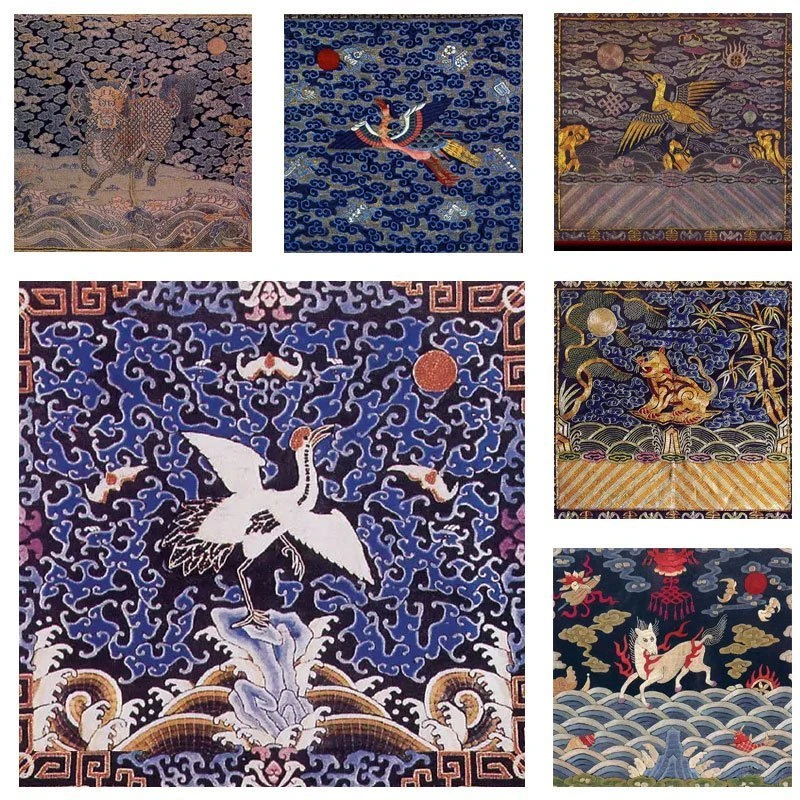
Therefore, it has high technological value and historical value. Today, it has become a precious collection of cultural relics.
The above is about the introduction of the Chinese robe. We hope you have some new understanding of Chinese traditional clothing from the article, and we will continue to update the content of the article.
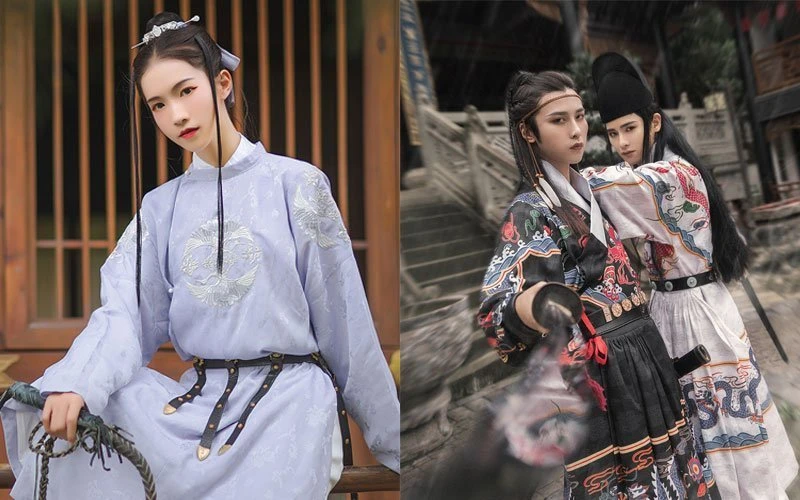


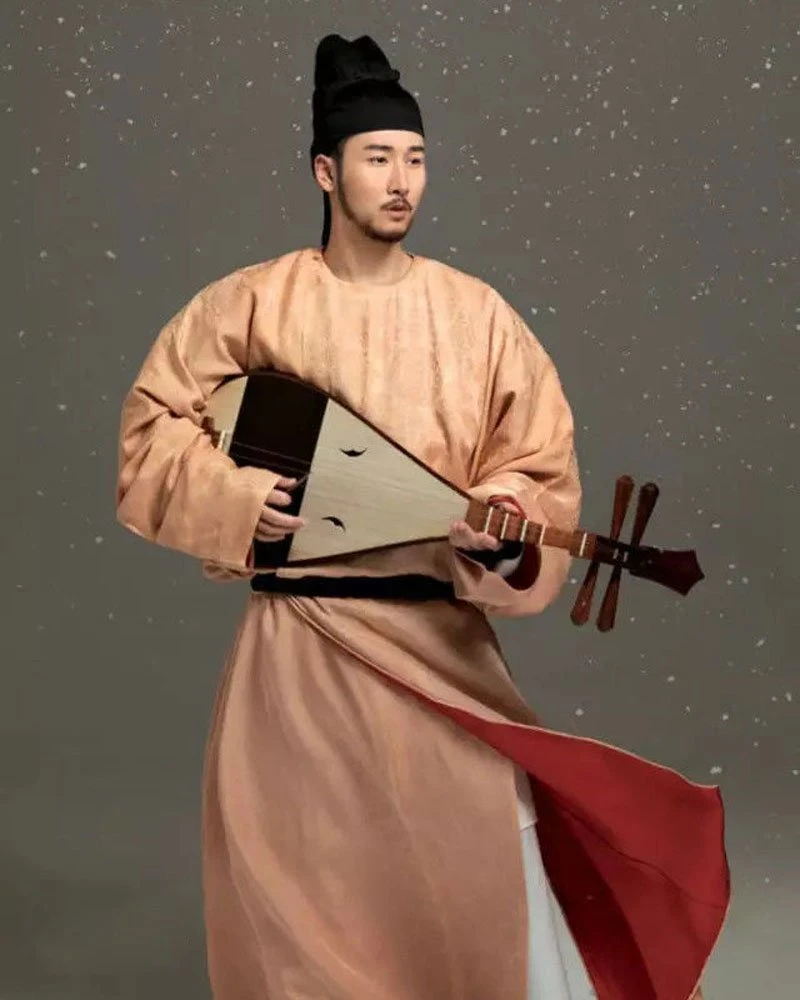
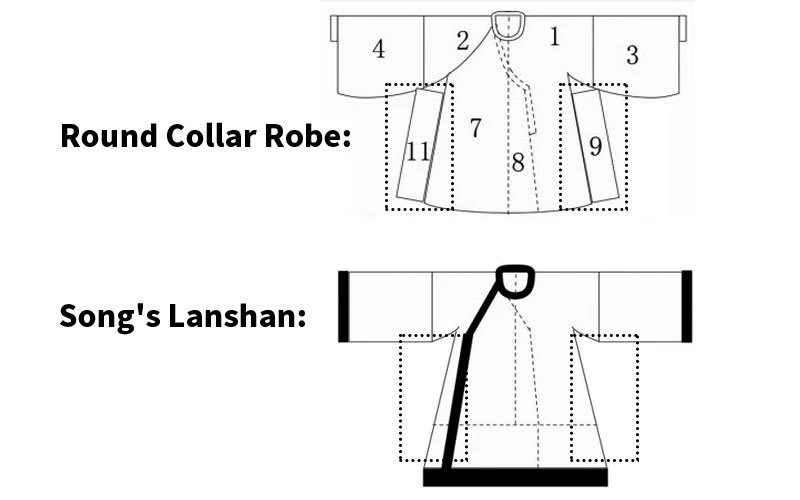
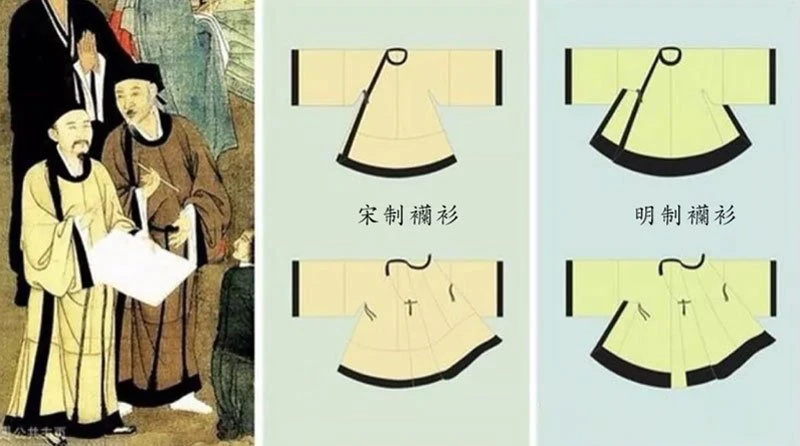
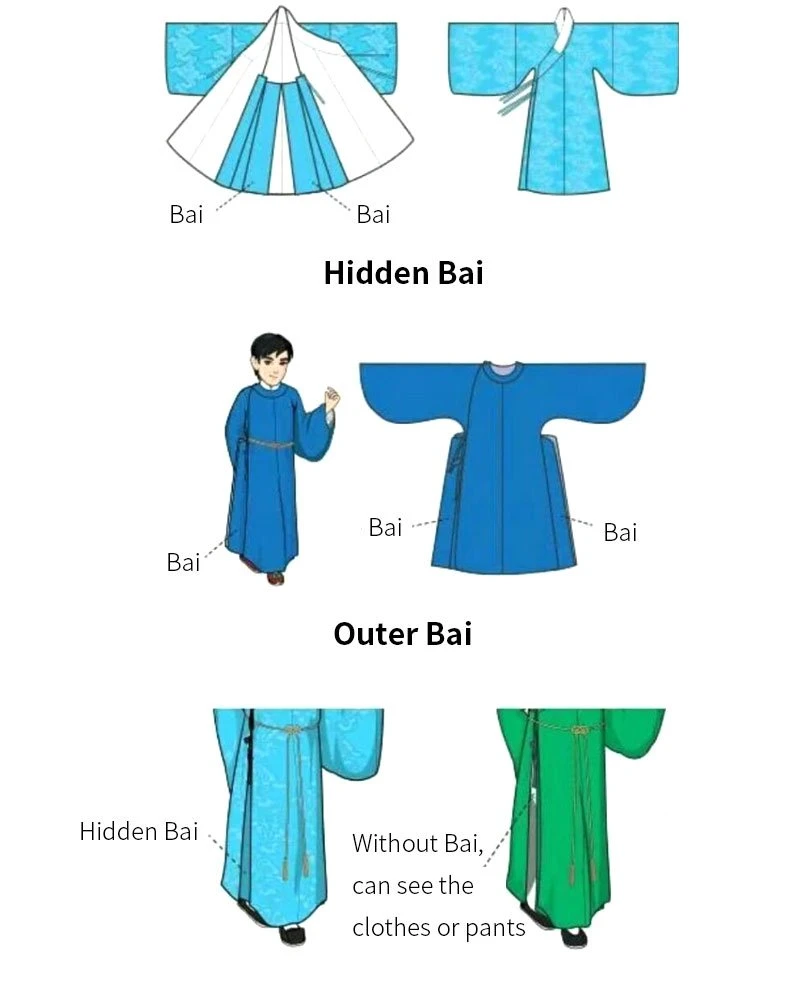
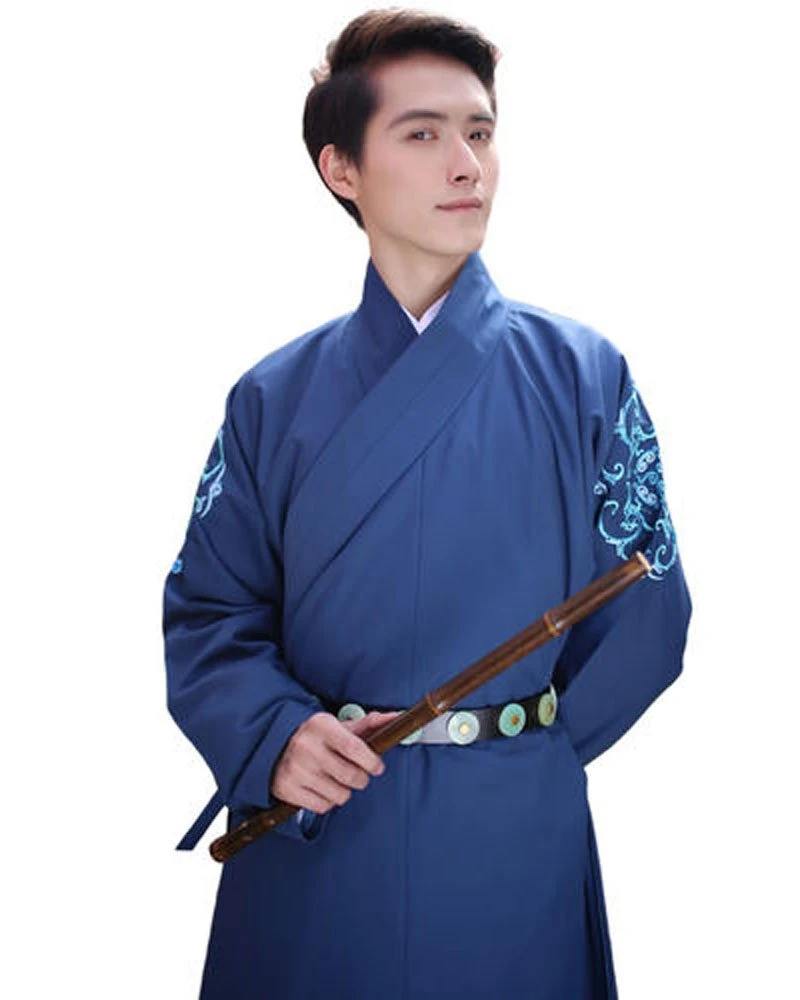
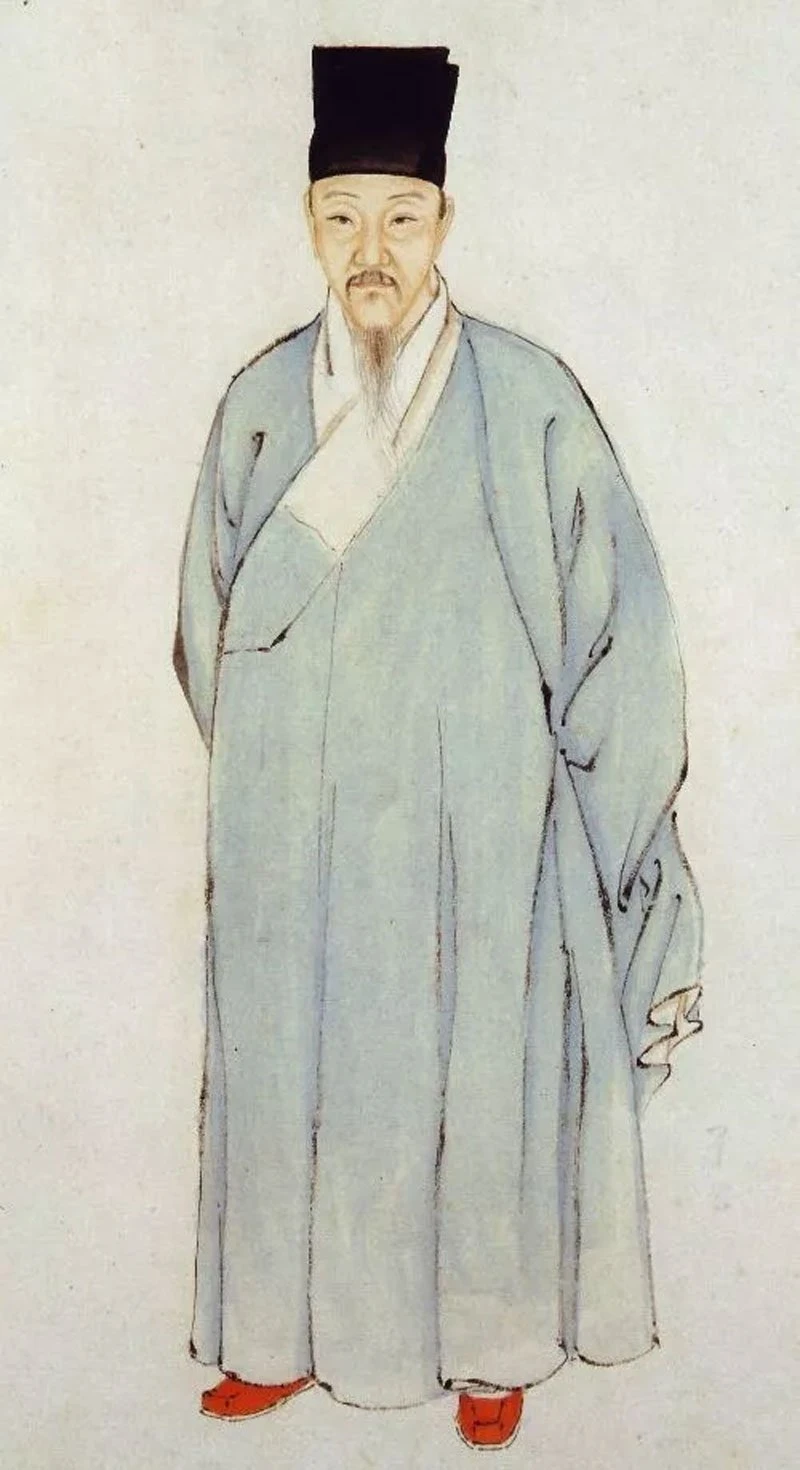

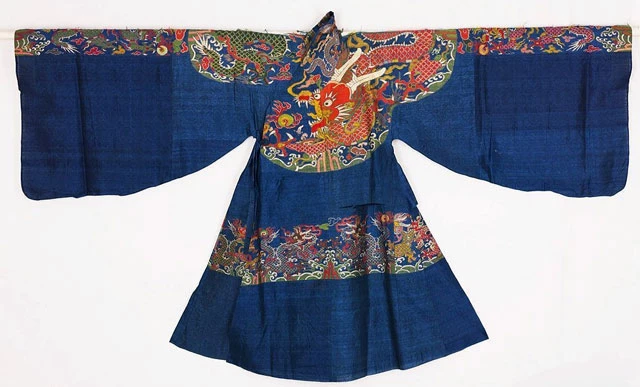
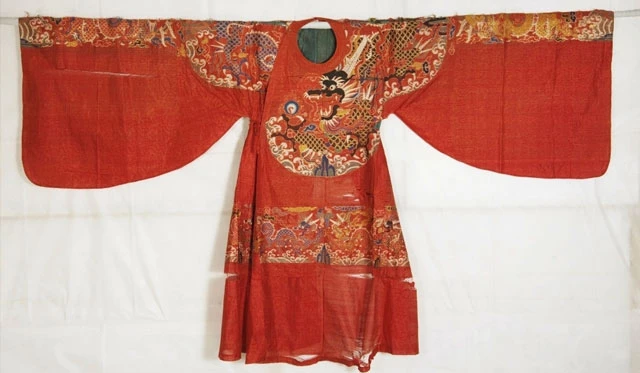
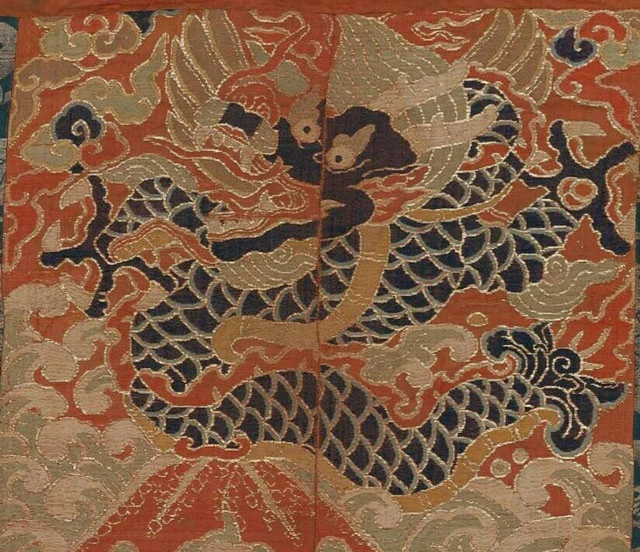
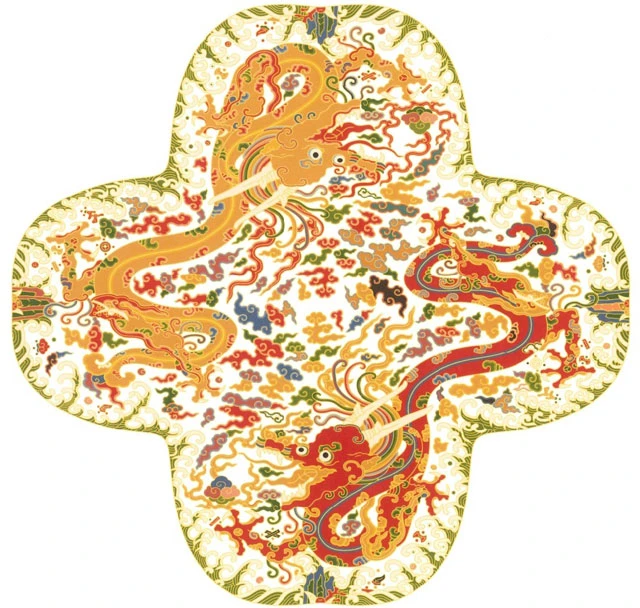
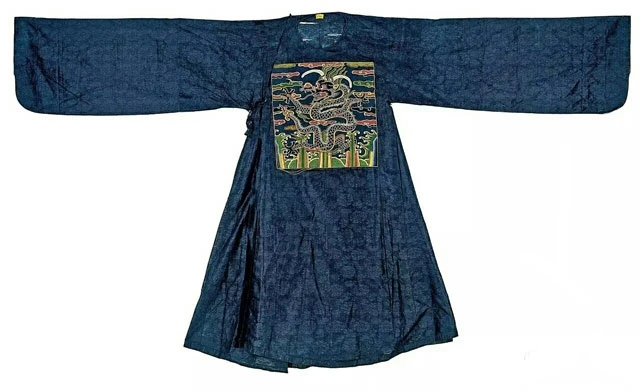
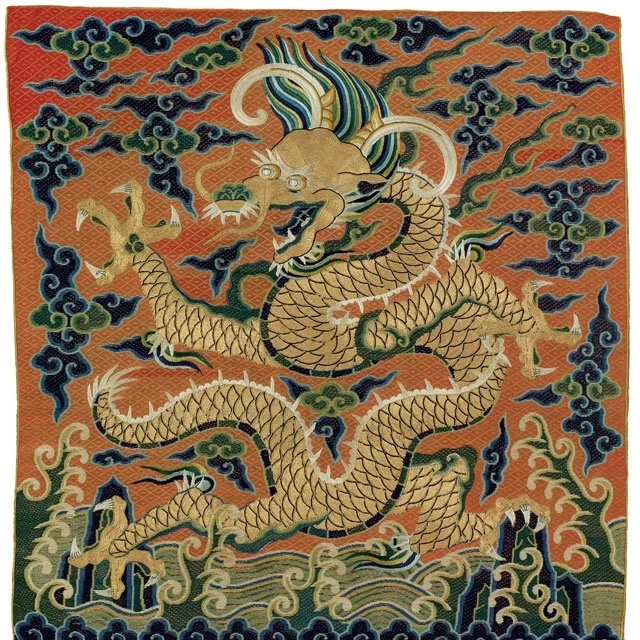
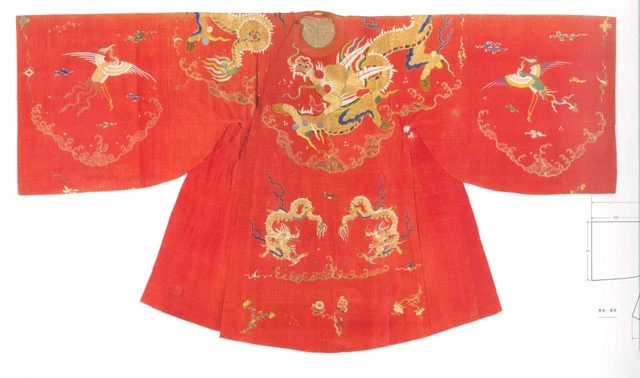

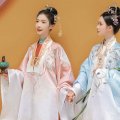

"The pattern of civilian's Buzi uses birds, and that of military general uses beasts." - That's cool! Thank you for all the info, great article! 🙂
This is such an awesome, clear, detailed, and well-written article!!! Thank you so much, I’ll be coming back to this for research and reference purposes!
Good
everything was thought about 👍